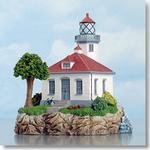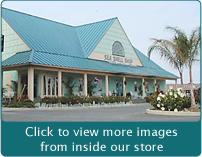Add Product Review
Tell us what you think about this item and share your experience with others. Please include only information that is relevant to the item you are reviewing.
Lime Kiln, Washington

In 1860 a lime producing operation that would last for 60 years started to mine the limestone on San Juan Island. Kilns were built to fire the limestone. To fire the kilns, much of the island was logged, roads were cut and buildings were constructed.
The United States Coast Guard operated a site adjacent to the lime quarry as a lighthouse preserve. Established on the west side of San Juan Island at Dead Man’s Bay in 1914, Lime Kiln, Washington State’s last major lighthouse, is a duplicate in design of another well-known Washington lighthouse, Alkali Point Light. In the early years, a fourth order Fresnel lens was lit 24 hours a day, requiring two keepers, each working 12 hours a day, seven days a week. In addition to their annual salaries of $800, the keepers were provided with housing. Two large keeper’s homes were built on the bluff away from the lighthouse.
Until the 1950s, an incandescent oil-vapor lamp was used. Finally in 1951, a submarine electric cable was laid and the Fresnel lens was replaced with a non-rotating beacon lit by an electric bulb. A fog signal, also on the island, was converted at the same time. In 1998 the beacon was replaced with a VRB-25 aerobeacon. The lighthouse signal of a white flash every 10 seconds is visible for 17 miles with the focal plane at 55 feet above the water. Since its automation in 1962, Lime Kiln is only lit at night.
Possession of the lighthouse was turned over to the Washington State Parks in 1984 and it is open for tours. The Coast Guard still maintains the beacon.
San Juan Island is also a home for the orca whale and a center for research and interpretation of this species.






